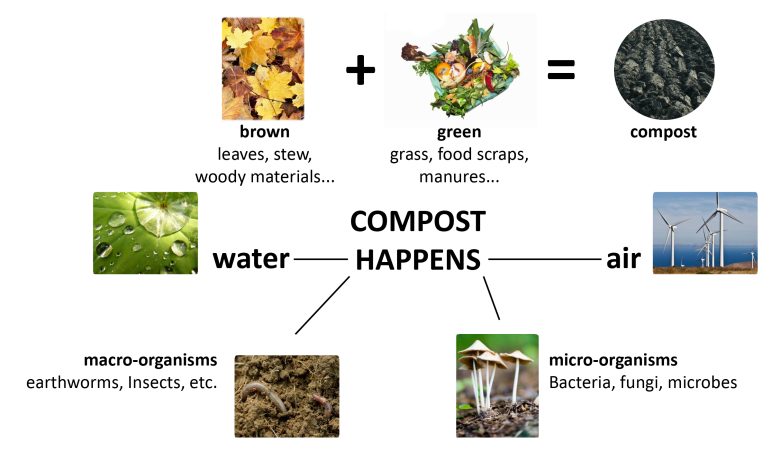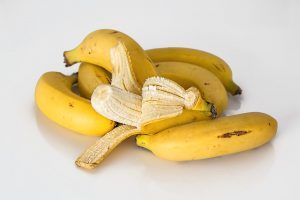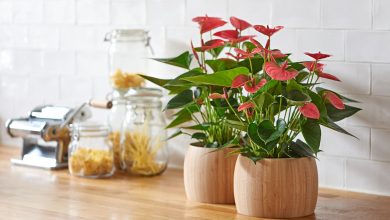How to Make Homemade Organic Compost: [Types and Forms]

When using organic manures and fertilizers, there are many advantages that are offered to us and, sometimes, producing them at home as a complement is the most natural, healthy and sustainable option, since we will also be reusing our organic waste.
Homemade organic fertilizer has the quality of adding the nutrients that the soil needs, thus increasing its growth and fertility.
We hope the information in this article will help you!
Vermicompost
Vermicompost is the process of transforming organic matter into an excellent quality fertilizer, commonly known as earthworm humus.
It consists of a biooxidation and stabilization of organic matter by the main action of what are commonly known as Californian red worms «Eisenia Foetida». Being an aerobic process, no bad odors are produced. With vermicomposting we obtain:
- Liquid worm humus: they are the leachate from the worms or in other words, the result obtained by the liquid waste from the worm beds. It is an excellent liquid fertilizer for plants and crops.
- Solid earthworm humus: very similar to earth, we obtain a fine and porous material of a dark brown color with a forest smell, being one of the best homemade organic fertilizers that exist.
One of the current brands with the best quality in the production of earthworm humus is Pur Plant. They also sell other pelletized organic fertilizers and ecological insecticides online in domestic format, so you can use them for your indoor plants.
They’re great!
Compost
 It is one of the most common homemade fertilizers. Its spongy texture and richness in nutrients and organic matter make it really valuable for the care of all kinds of plants.
It is one of the most common homemade fertilizers. Its spongy texture and richness in nutrients and organic matter make it really valuable for the care of all kinds of plants.
It is obtained by natural decomposition in the presence of oxygen. And the best, you can produce it yourself from any corner.
To produce it you will have to pile up plant remains and organic waste inside a composter. In this way and over time, we let nature act and to obtain a homemade organic matter such as compost ready to use.
Eggshells
Egg shells can be used in our garden both as a fertilizer and as a repellent. These provide an extra calcium that, on occasions, will favor the development of our plants.
On the other hand, it is a biological and homemade way to fight against snails and slugs and keep them away from our crops.
banana tea

Using banana peels is a natural, ecological and sustainable option as well as very economical. They have multiple benefits, especially it is rich in potassium, a vital component for plant growth.
Using it in an occasional moment can be a perfect natural solution.
wood ashes
Recovering the ashes produced by burning wood, such as collecting the ashes from our fireplaces, will be ideal to give them a new use as a homemade fertilizer rich in phosphorus. Of course, it is important to dilute the ashes in water and pulverize the soil of the plants for it to be effective.
Green manures
Green manures are plants that we do not cultivate to obtain fruit, but rather perform the function of natural fertilizer. They are used as ground covers, preventing evaporation and protecting them from possible erosion caused by wind and rain.
Some examples include white mustard and rye. They are most employed in regenerative agriculture and permaculture.
Manure
The excrements of animals such as horses, chickens, sheep and cows are undoubtedly the organic fertilizer par excellence, due to their high content of nitrogen and organic matter.
But there is a drawback, despite being the best natural fertilizer, to obtain it you must have these animals or buy it from a known farmer. Although for many, this process is not very pleasant.
How to make homemade organic fertilizer
Although there is also the possibility of throwing some fruit and vegetable remains directly onto the ground or substrate, the ideal way for them to decompose is to follow the composting process step by step:
First option
You can recycle your organic waste in each and put it directly on the potting soil. In 3-4 months you can see the results
Second option
Choose the container that best suits your needs to produce your own compost. You can use from a basin to a wooden box. The most important thing in the process is to properly follow the layers:
- Layer 1: use cardboard scraps. You can use everything from egg cups to toilet paper rolls or boxes from your online purchases.
- Layer 2: dry leaves. Add a good layer of dry leaves.
- Layer 3: Organic remains. It is important to note that not all food scraps are valid. Avoid meat and fish.
- Layer 4: Reuse dry leaves.
Continue the process successively and water continuously. After a few months you will get your own compost.
Third option
Advanced level. If instead you have time and space and want to make your own worm castings, you can make a vermicomposter with Californian red worms.
Benefits of using natural fertilizers
By using organics instead of chemicals, you limit your dependence on industries, reduce pollution and bet on a healthier and more beneficial environment for any type of plant. Also:
- You reduce your environmental footprint and pollution, since the process to obtain each fertilizer is 100% natural.
- Organic material is used for the benefit of plants and their natural cycle, such as manure, guano and pruning remains.
- It improves the permeabilization and oxygenation of the soil in which it is applied. Both at the structural level, as well as its physical and biological properties.
- They fix carbon in the soil and facilitate moisture absorption.
- You contribute to local development.
Either way, it doesn’t matter which option you choose. The most important thing is to start including new, more sustainable habits in your daily life.




![Photo of Why is my Pumpkin NOT producing Fruit? [Causes and Solutions]](https://www.complete-gardening.com/wp-content/uploads/2022/08/why-is-my-pumpkin-not-producing-fruit-causes-and-solutions-390x220.jpg)
![Photo of How to Plant Oleanders in your Garden: [Step by Step + Complete Guide]](https://www.complete-gardening.com/wp-content/uploads/2022/08/how-to-plant-oleanders-in-your-garden-step-by-step-complete-guide-390x220.jpg)